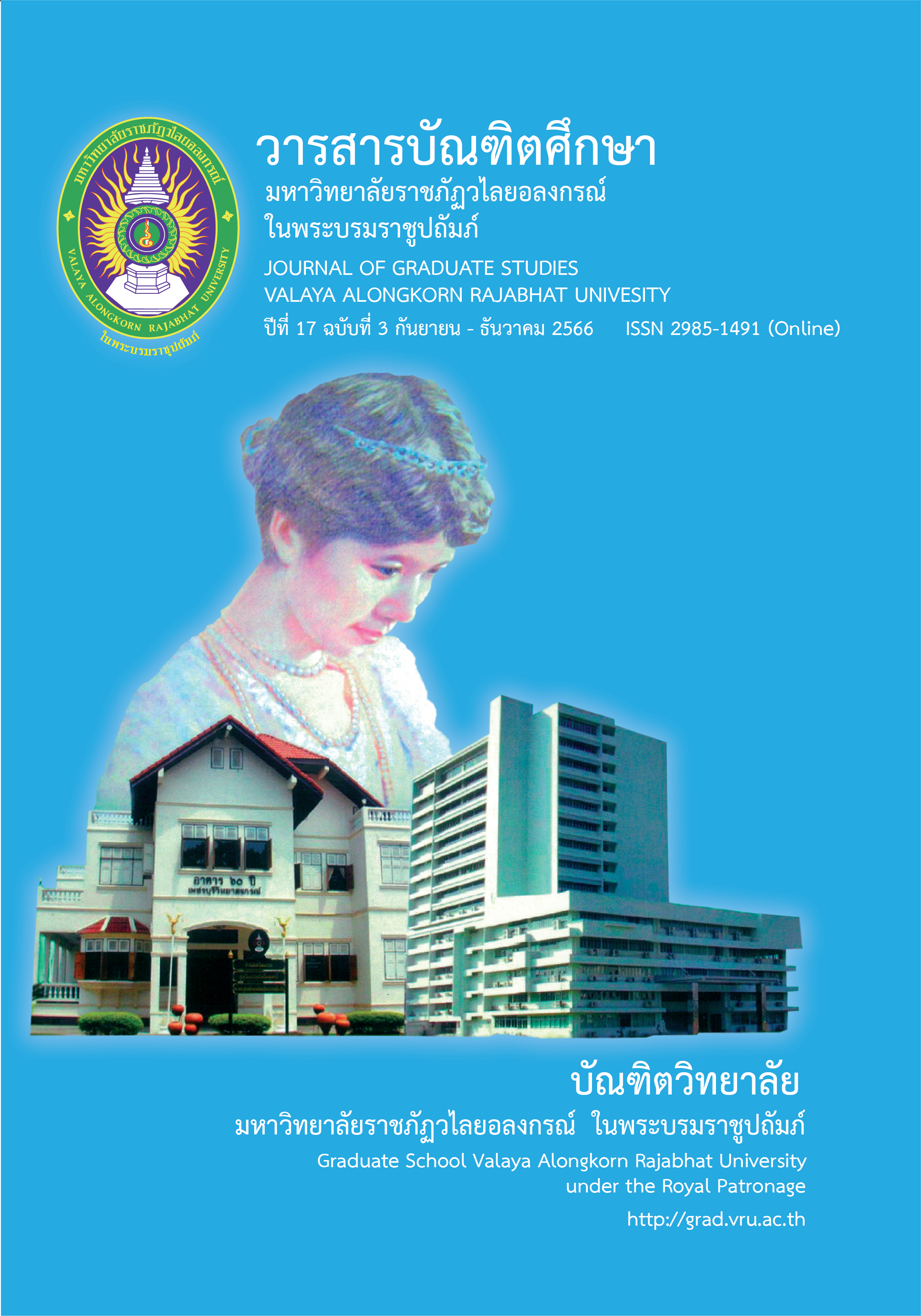BUDGET INFLUENCE ON HUMAN CAPITAL DEVELOPMENT AND INDUSTRY PROMOTION AFFECTING PROSPERITY AND HUMAN CAPITAL DEVELOPMENT IN THAILAND
Main Article Content
Abstract
The purpose of this study was to investigate 1) the influence of the budgets for human capital development and promotion of industries that affect the prosperity and development of human capital in Thailand, and 2) establish a prediction equation for the budgets for human capital development and promotion of industries that affect the prosperity and development of human capital in the country. By using secondary data from 1960 to 2021 to conduct a quantitative analysis using the least squares method (OLS).
The results found that 1) the budget for education, technology, and social development affected the change in real national income per capita and the human development index of a country. While the budget for public health spending and the budget for the promotion of industry affect the change in real gross national product per capita of a country. And 2) the prediction equation shows that human development budgets, such as education and technology budgets and social development budgets, increase by 1 million baht per year, increasing the prosperity in real per capita income by 0.256 baht and 2.66 baht respectively, and increase in human capital development in terms of the Human Development Index by 0.000000258 units and 0.000000843 units respectively. While the budget for human capital development for health promotion, such as the public health budget and the industrial promotion budget, is increased by 1 million baht per year, resulting in an increase prosperity in real GDP per capita of 0.675 baht and 12.20 baht, respectively.
Article Details

This work is licensed under a Creative Commons Attribution-NonCommercial-NoDerivatives 4.0 International License.
บทความทุกเรื่องได้รับการตรวจความถูกต้องทางวิชาการโดยผู้ทรงคุณวุฒิ ทรรศนะและข้อคิดเห็นในบทความ Journal of Global of Perspectives in Humanities and Social Sciences (J-GPHSS) มิใช่เป็นทรรศนะและความคิดของผู้จัดทำจึงมิใช่ความรับผิดชอบของบัณฑิตวิทยาลัย มหาวิทยาลัยราชภัฏวไลยอลงกรณ์ ในพระบรมราชูปถัมภ์ กองบรรณาธิการไม่สงวนสิทธิ์การคัดลอก แต่ให้อ้างอิงแหล่งที่มา
References
Ashraf, Q. H., Lester, A. & Weil, D. N. (2008). When does improving health raise GDP?. NBER macroeconomics annual. 23(1), 157-204.
Black, M. M., et al. (2021). The principles of Nurturing Care promote human capital and mitigate adversities from preconception through adolescence. BMJ Global Health. 6(4), e004436.
Baldacci, E., Clements, B., Gupta, S. & Cui, Q. (2004). Social spending, human capital, and growth in developing countries: Implications for achieving the MDGs.
Becker, B. E., Huselid, M. A. & Ulrich, D. (2002). Six key principles for measuring human capital performance in your organization. Business and Society Review. 1, 71-75.
Benhabib, J. & Spiegel, M. M. (1994). The role of human capital in economic development evidence from aggregate cross-country data. Journal of Monetary economics. 34(2), 143-173.
Chandler, A. D. (1972). Anthracite coal and the beginnings of the industrial revolution in the United States. Business History Review. 46(2), 141-181.
Goldstone, J. A. (2002). Efflorescence’s and economic growth in world history: rethinking the" Rise of the West" and the Industrial Revolution. Journal of world history. 323-389.
Hartwell, R. M. (2017). The industrial revolution and economic growth (Vol. 4). Taylor & Francis.
Heckman, J. J. (2005). China's human capital investment. China Economic Review. 16(1), 50-70.
Higonnet, P. L., Landes, D. S. & Rosovsky, H. (Eds.). (1991). Favorites of fortune: technology, growth, and economic development since the Industrial Revolution. Harvard University Press.
Inikori, J. E. & Inikori, J. E. (2002). Africans and the industrial revolution in England: a study in international trade and economic development (Vol. 22, p. 576). Cambridge: Cambridge University Press.
Jimenez, E., Nguyen, V. & Patrinos, H. A. (2012). Stuck in the middle? Human capital development and economic growth in Malaysia and Thailand. Human capital development and economic growth in Malaysia and Thailand (November 1, 2012). World Bank Policy Research Working Paper, (6283).
Laroche, M., Mérette, M. & Ruggeri, G. C. (1999). On the concept and dimensions of human capital in a knowledge-based economy context. Canadian public policy/Analyse de Politiques, 87-100.
Ma, J. K. H., Vachon, T. E. & Cheng, S. (2019). National income, political freedom, and investments in R&D and education: A comparative analysis of the second digital divide among 15-year-old students. Social Indicators Research. 144, 133-166.
Mowery, D. C. (2009). Plus ca change: Industrial R & D in the “third industrial revolution”. Industrial and corporate change. 18(1), 1-50.
Oluwatobi, S. O. & Ogunrinola, I. O. (2011). Government expenditure on human capital development: Implications for economic growth in Nigeria. Journal of sustainable development. 4(3), 72.
Phutrakul, P. (2018). rāičhāi sāthārana nai miti khō̜ng kānphatthanā thun manutsaya [Public expenditures in dimension of human capital development]. Nakhon Lampang Buddhist College’s Journal. 7(1), 352-367.
Rodjam, C., Chantakit, P. & Arsingsamanan, P. (2020). patčhai ʻitthiphon dān ngoppramān kānsưksā kap thun manut thī song phon tō̜ ʻarāi dai prachāchāt [Factors Affecting the Relationship between Education Budget and Human Capital that affects Gross Domestic Product (GDP)]. Journal of Liberal Arts, Maejo University. 8(2), 110-127.
Singhal, K. & Singhal, J. (2019). Technology and Manufacturing in China before the Industrial Revolution and Glimpses of the Future. Production and Operations Management. 28(3), 505-515.
Swift, R. (2011). The relationship between health and GDP in OECD countries in the very long run. Health economics. 20(3), 306-322.


